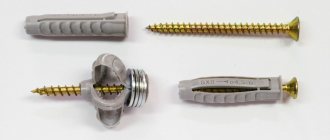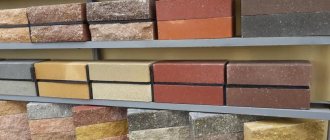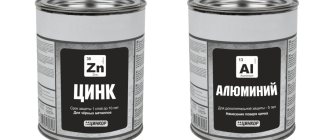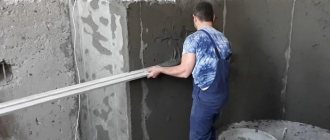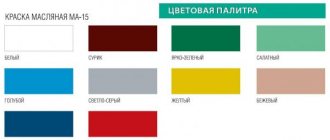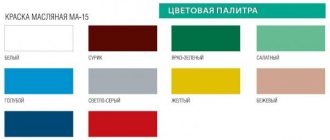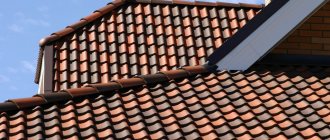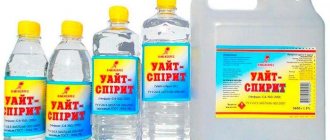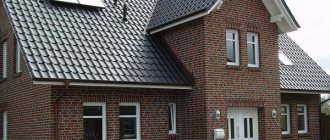Anchors, characterized by strength, are suitable for fastening structures of different weights. Areas of application for anchor bolts are construction and industry. It is suitable for fastening materials of different strengths. It is quite in demand in the market due to its versatility. In most cases, anchors are used for installation on durable structures. When it comes to porous, heterogeneous structures, it is better to use specially designed types of durable anchor bolts. This is the only way to ensure reliable fastening.
The anchor bolt is fixed due to several factors:
- friction force. The sleeve is in firm contact with the hole, fixing the position;
- force of the spacer mechanism;
- properties of adhesive components that hold the bolt due to the adhesive base.
Concept, purpose and use of anchor fasteners
An anchor is a type of fastener that is driven, screwed or inserted into the base and is capable of not only being fixed in it, but also holding an additional structure.
Translated from German, anchor means “anchor”. In terms of the way they act on the base, fasteners of this type really resemble an anchor - the working part of the anchor, when fastened, expands and holds the connection to the base.
Fasteners of this type are used when working with hard base materials - concrete, brick, natural stone. The anchor allows you to hold fairly massive structures or structures that are subject to dynamic loads, for example, plumbing fixtures, air conditioners, wall-mounted televisions, sports equipment, suspended ceilings, etc.
Expert opinion
Torsunov Pavel Maksimovich
The versatility and reliability of the anchor connection allows them to be used when working with other materials. For example, there are anchors for fastening in porous and lightweight materials, for connecting furniture elements. This type of fastening connection has found its application even in dentistry - an anchor pin is fixed in the root canal of the tooth and serves as a support for a filling or microprosthesis.
Application
Mechanical anchor bolts can withstand heavy loads when connecting to low-porosity surfaces. If we are talking about materials with a non-uniform porous structure, then chemical anchors are suitable.
Domestic concrete anchor bolts are great for installing plumbing fixtures, hanging systems, doors, ceilings and other items.
Wedge bolts are mounted into dense surfaces. If we consider their use in everyday life, sports corners and punching bags are often attached. There are also anchors that can be used to attach to foundations with cracks. When choosing an anchor bolt, you need to take into account not only the features of the product, but also the base on which you want to attach the bolt.
Stud bolts can be attached to monolithic structures and those that have cracked. According to this criterion, the categories HAS and HST are divided. The performance properties of the bolts are indicated on the packaging. There must also be markings according to international standards. Their decoding will provide information about: material, load withstand (tearing and shearing), operating conditions, type, dimensions, technical properties.
Before installation, be sure to calculate the tension force of the walls and ceilings. Since anchors are in demand in the construction industry, they are often used to install massive and large structures.
In terms of cost, the chemical type is considered the most expensive. These are innovative developments that are not yet being tested as actively on the Russian market, unlike the European one. Large construction holdings are already taking advantage of the benefits of chemical anchors.
The design of anchors, unlike other fastening connections
A classic anchor is a combined metal structure consisting of a non-expandable (body or base) and an expansion (working) part. The base can be a bolt, screw, pin or nail, the spacer part can be in the form of a sleeve, cone, sleeve, etc. When using a fastener, the working part expands and, due to friction and resistance of the material, holds the structure in the base material.
The main difference between an anchor and a dowel that is similar in design and purpose is the material of manufacture. A dowel consists of a soft part, usually plastic, in which a fastening element, for example a self-tapping screw, is fixed. The principle of fastening the dowel is based solely on the frictional force between the working surface of the fastening joint and the base.
Since the anchor is usually made of alloy steel or other metals (brass, aluminum), its fastening principle is based not only on friction between the main and working parts, but also on the resistance of the material. Anchors are able to withstand more severe dynamic loads than fastening joints using dowels.
Anchor bolt installation technology
First of all, depending on the thickness of the base and the weight of the structure being strengthened, the size and length of the anchor fasteners are selected.
Drill a hole in the base. The bushing should fit with interference. The depth is made slightly greater than the length of the sleeve.
Attention! After drilling is done, thoroughly clean the hole from any remaining base, crumbs, etc.
An anchor is installed in the hole, after which the structure is assembled. Installation must be done with light hammer blows. The force applied when twisting should gradually increase. Don’t “overdo it”: the anchor should hold firmly, but not destroy the base material.
Permissible loads
The working loads of all types of anchor fasteners should be no more than 25% of the maximum pull-out load when used in concrete with a strength of 200-250 kgf/cm2 (corresponding to concrete grades M200 and M250). As the strength of concrete increases, the recommended load of fasteners increases proportionally. If there are cracks in the concrete, the pull-out load is multiplied by a factor of 0.6.
Basic requirements for PPE for heights
Requirements for the organization of personal protective equipment for work at height are described in GOST EN 795 and GOST EN/TS 16415. According to the requirements of these standards, equipment is tested and certified before use. The standards do not specify the classification of anchor equipment, but manufacturers of protective equipment identify several main types of such products.
The main and most used types of products:
- Mobile anchor devices. The equipment is fixed horizontally and ensures safe movement in the installation area. The subsystem is fixed using various connecting elements.
- Stationary anchor devices. Provides security in fairly large areas. Manufacturers create a ready-made line that cannot be changed during operation. Products are made on the basis of steel rope or profile.
- Special pillars. These systems prevent snow from driving the safety equipment attachment point. Also, raising the connection point improves safety and avoids the risk of jerking.
- Devices with counterweight. These are portable systems that are used only if there is no other option for organizing the safety of a high-altitude worker’s workplace. Such complexes are also required to undergo certification before use.
There are also variations of the above systems that allow you to adjust the safety equipment to the needs of the user. It is worth considering that the equipment is produced only by certified companies, and quality certificates are required upon delivery. Any violations during the certification or installation process will be grounds for refusal to use the equipment. Otherwise, the safety of employees is not guaranteed.
Classifications
Anchors are classified according to service life:
- Permanent.
- Temporary.
By size, fasteners are divided into:
- Small (up to 5.5 cm long and up to 0.8 mm in diameter).
- Medium (up to 12 cm long and up to 1.2 cm in diameter).
- Large (up to 22 cm long and up to 2.4 cm in diameter).
According to the base material, anchors are distinguished:
- For dense concrete, brick or stone materials.
- For hollow brick and concrete foundations.
- For sheet materials - plasterboard, chipboard and fibreboard.
According to the method of fastening, the following are distinguished:
- Mechanical
Fastening is carried out due to the direct mechanical effect of the working part of the anchor on the base (wedging, friction, stop, material resistance, etc.).
- Chemical
Additionally, a gluing mechanism (force) is used; for fastening, adhesive based on polyester resins is used.
What anchor do you use?
ChemicalMechanical
Mechanical anchors according to the technique of insertion into the base are divided into the following types:
- Wedges.
- Spacers.
- Hammers.
- Screw.
- Bushings.
- Expandable.
- Spring.
Spacers
Expansion anchors are a classic type of this type of fastener. They are a rod in the form of a bolt or pin with a cone-shaped end and an external element in the form of a sleeve, bushing or spring ring. The conical element, under the influence of the translational movement of the rod, expands the sleeve and secures the structure in the base.
Expanding
An expansion anchor consists of a threaded rod, which can be a bolt, stud or screw, and a sleeve consisting of 4 longitudinal petals with a spring ring and a cone nut on one side. When the rod rotates, the cone nut unclenches the sleeve petals, as a result of which the anchor expands and is secured in the base due to friction.
Wedge
Wedge fasteners are a long rod, at the end of which there is a deformation sleeve. After screwing the rod into the drilled hole, the sleeve petals expand. This type of fastener can withstand heavy loads.
Spring
Spring anchors are used when working with thin-walled bases, for example, when arranging the interior. Often, spring anchors are used as ceiling anchors and are equipped with a hook. The anchor is secured by unrolling the spring.
Screw
Screw anchors, or Molly bolts, are used when working with hollow structures with low load-bearing capacity - hollow brick, plasterboard, particleboard and fiberboard, etc. The Molly bolt is equipped with a special collet, which, when the bolt is tightened, opens and rests against material on the reverse side.
Bushing
Sleeve-type anchors consist of 3 or more elements, the main one of which is the collet - a spring split sleeve. The sleeve anchor design also includes a riving element and a threaded rod. When the anchor is twisted, the wedging element enters the collet and pushes it apart, thereby securing the fastener to the base.
Drivers
The basis of the driven anchor is a metal deformation sleeve with a conical hole, cuts in the body and internal threads. A firing pin is installed at the bottom of the sleeve. The sleeve is installed into the drilled hole manually or using an air gun. When the outer end of the sleeve is struck, it is deformed, after which a bolt or pin is screwed into the sleeve, necessary for fastening any object.
Anchoring of building structures
Anchor elements ensure the transfer of the load from attached objects to the anchor base, which can be a load-bearing or non-load-bearing building structure.
A wide range of natural and industrial materials can be secured with anchor bolts. The load on the base can be static or dynamic.
The environment in which anchor elements are placed also has a fundamental influence on their selection in terms of influencing the material of the anchors, whether they are embedded in the structure or located in an open space, air gap.
Attaching objects can be done in two ways.
- Having secured the anchor bolts in advance;
- Additional fastening of anchors.
Anchoring can be done in bricks, concrete, metals, plastics and wood. For these purposes, materials can be divided into groups according to the cubic capacity of the material:
- With low cubic strength below 10 MPa. Such materials include solid brick masonry, hollow brick masonry, plasterboard, foam concrete;
- With cubic strength from 10 to 50 MPa. These materials can be used to remove and install anchors with high load-bearing capacity. This group includes high-strength brickwork and concrete;
- Cubic strength more than 50 MPa. Installation of anchor bolts in such structures is impossible.
Fastening to plastic and wood is carried out by a simple technology of hammering various nails manually or pneumatically. Another way is to drill out the screws.
Basic designs of mechanical anchors
According to their design, mechanical anchors are also divided into the following main types.
Bolt and nut
The simplest type of spacer fastener, which is a rod (bolt) with a conical end, a sleeve with four cutouts and a nut. The nut acts as a lock - with its help the structure is fixed in a pre-drilled mounting hole, the diameter of which is equal to the diameter of the sleeve. After driving the rod into the hole, the nut is turned clockwise, thereby moving the rod outward. The tapered end of the pin expands the sleeve in the area of the cutouts, thereby securing the structure in the hole.
Anchor bolts are available in various sizes: the diameter of the rod is from 6 to 28 mm, the length is from 60 to 300 mm. Anchor bolts are used when working with dense materials (concrete, brick, stone).
Bolt with ring
Ceiling anchor, usually used for attaching lamps, chandeliers to the ceiling, cables, electrical cables, suspended ceilings, etc. Fasteners of this type, as an exception, can also be used on walls.
The only difference between such a fastener and an anchor bolt with a nut is that its outer end ends with an eyelet, which is necessary for hanging a hinged device or product. Fastening of such a structure is carried out in a similar manner: the fixing nut, located directly behind the end in the form of a ring, allows you to open and fix the sleeve in the hole.
Hook bolt
A fastener in the form of a bolt having a hook-shaped head. Used for fastening heavy structures to solid concrete, stone or brick foundations. The principle of fastening is similar to other connections in the form of a bolt with a nut - after tightening the fixing nut, the sleeve is deformed and secured in the drilled hole.
Hex Bolt
An anchor of this type is analogous to a bolt with a nut, but here a standard bolt is used instead of a rod (stud) and nut. When the bolt is tightened with a wrench, the tapered end deforms the sleeve, thereby filling the walls of the hole and securing the structure in it. Also available in a screwdriver version.
Double-spacer
Double Expansion Mechanical Anchors - Another expansion bolt and nut. The difference is that the design uses two sleeves (bushings, couplings) - short and long. The short one goes inside the long one with its cone-shaped end. When the nut is screwed in, the short sleeve expands with the cone-shaped end of the rod and, in turn, expands the long sleeve. Double-expansion anchors can also have a ring or hook end. Anchors of this design are used to increase the reliability of fastening.
Nails
Nail-type anchors are used when working with brick, concrete and stone foundations and are intended for fastening lightweight structures. They have the shape of a hollow nail, inside of which a wedging element is placed. The anchor is driven into the hole manually or using a power tool.
How is a collet bolt classified by application?
Anchor-type fasteners are used to fix:
- window and door frames;
- household electrical equipment;
- flights of stairs;
- suspended ceilings;
- engineering communications;
- steel structures.
Fasteners are also used for the following purposes:
- fixing the metal frame in the foundation;
- ensuring reliable fastening with cellular building materials;
- fastening massive structures to concrete and stone walls;
- remote installation through a thick layer of thermal insulation material or decorative finishing to the facade surface.
For each application, you can always choose the optimal type of fastener.
Collet bolt is used when fastening flights of stairs
Chemical
Chemical anchors are a type of fastening elements that, in addition to frictional force and material resistance, also use adhesive force through the use of synthetic resins.
This provides additional fixation. Chemical fasteners are used when securing particularly heavy structures or when working with porous and soft materials.
Expert opinion
Torsunov Pavel Maksimovich
The chemical anchor is usually a standard stud. After drilling the hole, its walls are blown out and covered with adhesive, after which the anchor is inserted. The disadvantage of chemical anchors is that they cannot be used immediately; you must wait until the adhesive reaches maximum strength.
In land management
Anchor products made of plastic have found application in land management and are used to strengthen banks, construct road embankments and pipelines.
Fastening elements have increased impact resistance and frost resistance, and are able to withstand the effects of groundwater, hazardous chemicals and corrosion.
Plastic fasteners are T-shaped and range from 60 to 120 centimeters in length. When driving into the ground and installing the ATP clip, the fastening elements are connected by a polymer cable and form a three-dimensional geogrid.
Dental anchor pins
Anchoring is also used in dentistry for endodontic treatment and dental prosthetics. Reinforced pins, manufactured in accordance with the anchor system, are placed inside the root canal of the tooth and strengthen the root of the tooth and its visible part. Thus, tooth prosthetics occurs, preventing bacteria from accessing the root system and resisting mechanical stress that can destroy the tooth.
A dental pin is attached to a tooth like an anchor and comes in several types:
- Active - they form a groove on the channel stacks due to the presence of threads; fastening occurs due to friction.
- Passive - attached using fixing cement.
- Semi-active - fastened with cement and threads on a limited part of the pin.
Advantages and disadvantages
Despite the fact that anchor systems are considered universal, it is more advisable to use them in solid monolithic foundations. If you need to fix the structure on a wooden surface, you can find budget options.
If you install an anchor bolt as intended, you can evaluate its strengths:
- withstands heavy loads. This is the strongest and most reliable fastener, which is in demand in the construction and industrial industries;
- a wide selection of fasteners by size, load-bearing capacity, and installation features;
- material – carbon steel. It is durable and does not corrode;
- easy installation. No special equipment is required to install fasteners;
- in addition to installing new structures, existing ones can be strengthened with anchor bolts;
- the anchor bolt remains motionless even when exposed to constant forces. For example, if there is vibration in the installation area.
The disadvantages include the relatively high cost of bolts. To install all types of anchor bolts, it is necessary to drill a hole, which may seem inconvenient and difficult. Reliable fastening can only be ensured with a competent approach and accurate calculations.

